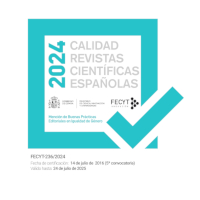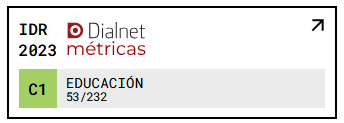Longitudinal study on anti-bullying interventions on primary school students in a rural school
DOI:
https://doi.org/10.18172/con.5075Keywords:
Bullying, anti-bullying, students, school, ElementaryAbstract
There is a dearth of literature examining the impact of antibullying interventions in rural primary school children. However, it has been documented that early intervention and family education is of great impact when fighting bullying. Therefore, during this three-year study, the effects of interventions on bullying rates in elementary school children were examined in a rural elementary school in the state of Florida in U.S. The interventions analyzed included group-based psychoeducation, talk therapy, action with consequences, and parental involvement.
Only 55 of the 1,712 students, (3.2%) of the sample, turned out to be bullies. There were 226 alleged bullying events reported, and of these, only 46 met the bullying criteria established by the school board. After applying the intervention techniques rigorously and with fidelity, false reports decreased by 96%, and actual bullying events decreased by 83%.
The results indicated that anti-bullying interventions can reduce or eliminate bullying in elementary school students. The most successful intervention observed in this study was the combination of group discussions with action/ consequences and parental involvement.Downloads
References
Ahtola, A., Haataja, A., Kärnä, A., Poskiparta, E. y Salmivalli, C. (2012). For children only? Effects of the KiVa antibullying program on teachers. Teaching and Teacher Education, 28(6), 851-859. https://doi.org/10.1016/j.tate.2012.03.006 DOI: https://doi.org/10.1016/j.tate.2012.03.006
Caputi, T. L. y Thomas McLellan, A. (2017). Truth and DARE: Is DARE’s new Keepin’it REAL curriculum suitable for American nationwide implementation? Drugs: Education, Prevention and Policy, 24(1), 49-57. https://doi.org/10.1080/09687637.2016.1208731 DOI: https://doi.org/10.1080/09687637.2016.1208731
Flynn, K., McDonald, C. C., D’Alonzo, B. A., Tam, V. y Wiebe, D. J. (2018). Violence in rural, suburban, and urban schools in Pennsylvania. The Journal of School Nursing, 34(4), 263-269. https://doi.org/10.1177/1059840518765086 DOI: https://doi.org/10.1177/1059840518765086
Huang, Y., Espelage, D. L., Polanin, J. R. y Hong, J. S. (2019). A meta-analytic review of school-based anti-bullying programs with a parent component. International Journal of Bullying Prevention, 1(1), 32-44. https://doi.org/10.1007/s42380-018-0002-1 DOI: https://doi.org/10.1007/s42380-018-0002-1
Interagency Working Group on Youth Programs. (2020). KiVa antibullying program. https://youth.gov/content/kiva-antibullying-program
Irwin, V., Wang, K., Cui, J., Zhang, J. y Thompson, A. (2021). Report on Indicators of School Crime and Safety: 2020. U.S. Department of Education and the U.S. Department of Justice. https://bjs.ojp.gov/sites/g/files/xyckuh236/files/media/document/iscs20.pdf
Karna, A., Voeten, M., Little, T. D., Poskiparta, E., Kaljonen, A. y Salmivalli, C. (2011). A large-scale evaluation of the KiVa antibullying program: Grades 4-6. Child Development, 82(1), 311-330. https://doi.org/10.1111/j.1467-8624.2010.01557.x DOI: https://doi.org/10.1111/j.1467-8624.2010.01557.x
Limber, S. P., Olweus, D., Wang, W., Masiello, M. y Breivik, K. (2018). Evaluation of the Olweus Bullying Prevention Program: A large scale study of US students in grades 3-11. Journal of School Psychology, 69, 56-72. https://doi.org/10.1016/j.jsp.2018.04.004 DOI: https://doi.org/10.1016/j.jsp.2018.04.004
Marshall, C. A., Kendall, E., Banks, M. E., Gover, R. M. y Bornemann, T. (2009). Disabilities: Insights from across fields and around the world. CT: Praeger. https://psycnet.apa.org/record/2009-11004-000
Oficina del Censo de los Estados Unidos (2017). Annual estimates of the resident population: April 1, 2010 to July 1, 2016. https://www.census.gov/programs-surveys/popest.html
Olweus, D. (1994). Bullying at school. En Aggressive Behavior (pp. 97-130). Boston: Springer. https://www.ncbi.nlm.nih.gov/pmc/articles/PMC2435211/ DOI: https://doi.org/10.1007/978-1-4757-9116-7_5
Olweus, D. y Limber, S. P. (2010). Bullying in school: Evaluation and dissemination of the Olweus Bullying Prevention Program. American Journal of Orthopsychiatry, 80(1), 124-134. https://doi.org/10.1111/j.1939-0025.2010.01015.x DOI: https://doi.org/10.1111/j.1939-0025.2010.01015.x
Piñero Ruiz, E., Gonzalo, J. J. A. y Ramírez, F. C. (2013). Contexto familiar y conductas de agresión y victimización entre escolares de educación secundaria. Bordón. Revista de Pedagogía, 65(3), 109-129. https://dialnet.unirioja.es/servlet/articulo?codigo=4396566 DOI: https://doi.org/10.13042/23167
Rodkin, P. C., Espelage, D. L. y Hanish, L. D. (2015). A relational framework for understanding bullying: Developmental antecedents and outcomes. American Psychologist, 70(4), 311-321. https://www.apa.org/pubs/journals/releases/amp-a0038658.pdf DOI: https://doi.org/10.1037/a0038658
Tonono, M. (2017). Bullying in rural schools: A comparison between boys and girls. (Tesis doctoral). https://core.ac.uk/download/pdf/188775016.pdf
Torio-López, S. T., Calvo, J. V. P. y Menéndez, M. D. C. R. (2008). Estilos educativos parentales: Revisión bibliográfica y reformulación teórica. Teoría de la Educación. Revista Interuniversitaria, 20, 151-178. https://pdfs.semanticscholar.org/e909/f582d35753fe9aff4437c66fbc20a02e2d65.pdf
Van der Ploeg, R., Steglich, C. y Veenstra, R. (2016). The support group approach in the Dutch KiVa anti-bullying programme: effects on victimisation, defending and well-being at school. Educational Research, 58(3), 221-236. https://doi.org/10.1080/00131881.2016.1184949 DOI: https://doi.org/10.1080/00131881.2016.1184949
West, S. L. y O’Neal, K. K. (2004). Project DARE outcome effectiveness revisited. American Journal of Public Health, 94(6), 1027-1029. https://doi.org/10.2105/AJPH.94.6.1027 DOI: https://doi.org/10.2105/AJPH.94.6.1027
Yang, F. y Zhang, L. (2018). Problem behavior patterns of victims of school bullying in rural China: The role of intrapersonal and interpersonal resources. Children and Youth Services Review, 93, 315-320. https://doi.org/10.1016/j.childyouth.2018.08.007 DOI: https://doi.org/10.1016/j.childyouth.2018.08.007
Zhang, A., Wang, K., Zhang, J., Kemp, J., Diliberti, M. y Oudekerk, B. A. (2018). Indicators of school crime and safety: 2017. NCES 2018-036/NCJ 251413. Washington: National Center for Education Statistics. https://eric.ed.gov/?id=ED543705
Downloads
Published
How to Cite
Issue
Section
License
The authors retain copyright of articles and authorize Contextos Educativos. Revista de Educación the first publication. They are free to share and redistribute the article without obtaining permission from the publisher as long as they give appropriate credit to the editor and the journal.
Self-archiving is allowed too. In fact, it is recommendable to deposit a PDF version of the paper in academic and/or institutional repositories.












